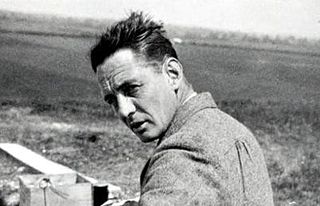
Midas was the name of a king in Phrygia with whom many myths became associated, as well as two later members of the Phrygian royal house.

Avebury is a village and civil parish in Wiltshire, England. The village is about 5.5 miles (9 km) west of Marlborough and 8 miles (13 km) northeast of Devizes. Much of the village is encircled by the prehistoric monument complex also known as Avebury. The parish also includes the small villages of Avebury Trusloe and Beckhampton, and the hamlet of West Kennett.

A kurgan is a type of tumulus constructed over a grave, often characterized by containing a single human body along with grave vessels, weapons and horses. Originally in use on the Pontic–Caspian steppe, kurgans spread into much of Central Asia and Eastern, Southeast, Western and Northern Europe during the 3rd millennium BC.

Woodhenge is a Neolithic Class II henge and timber circle monument within the Stonehenge World Heritage Site in Wiltshire, England. It is 2 miles (3.2 km) northeast of Stonehenge, in Durrington parish, just north of the town of Amesbury.

Avebury is a Neolithic henge monument containing three stone circles, around the village of Avebury in Wiltshire, in south-west England. One of the best-known prehistoric sites in Britain, it contains the largest megalithic stone circle in the world. It is both a tourist attraction and a place of religious importance to contemporary pagans.
Below are notable events in archaeology that occurred in 1937.

Children of the Stones is a British television fantasy drama serial for children, produced by HTV in 1976 and broadcast on the United Kingdom's ITV network in January and February 1977. The serial was produced by Peter Graham Scott, with Patrick Dromgoole as executive producer. A novelisation by the serial's writers, Jeremy Burnham and Trevor Ray, also appeared in 1977. In the United States, it was broadcast on the Nickelodeon television channel in the early 1980s as part of the series The Third Eye.

Kennet Avenue or West Kennet Avenue is a prehistoric site in the English county of Wiltshire. It was an avenue of two parallel lines of stones 25m wide and 2.5 km in length, which ran between the Neolithic sites of Avebury and The Sanctuary.

Sir William Henry Flower was an English surgeon, museum curator and comparative anatomist, who became a leading authority on mammals and especially on the primate brain. He supported Thomas Henry Huxley in an important controversy with Richard Owen about the human brain and eventually succeeded Owen as Director of the Natural History Museum in London.

Alexander Keiller was a Scottish archaeologist, pioneering aerial photographer, businessman and philanthropist. He worked on an extensive prehistoric site at Avebury in Wiltshire, England, and helped ensure its preservation.

Avebury Manor & Garden is a National Trust property consisting of a Grade I listed early-16th-century manor house and its surrounding garden. It is in Avebury, near Marlborough, Wiltshire, England, in the centre of the village next to St James's Church and close to the Avebury neolithic henge monument.

Maud Edith Cunnington was a Welsh archaeologist, best known for her pioneering work on some of the most important prehistoric sites of Salisbury Plain.
Stonehenge, Avebury and Associated Sites is a UNESCO World Heritage Site (WHS) in Wiltshire, England. The WHS covers two large areas of land separated by about 24 kilometres (15 mi), rather than a specific monument or building. The sites were inscribed as co-listings in 1986. Some large and well known monuments within the WHS are listed below, but the area also has an exceptionally high density of small-scale archaeological sites, particularly from the prehistoric period. More than 700 individual archaeological features have been identified. There are 160 separate scheduled monuments, covering 415 items or features.
Adichanallur is an archaeological site in Thoothukudi district in Tamil Nadu, India that has been the site of a number of very important archaeological finds. Korkai, the capital of the Early Pandyan Kingdom, is located about 15 km from Adichanallur. Carbon dating of samples excavated in 2004 from the Adichanallur site has revealed that they belonged to the period between 1000 BC and 600 BC. In 2005, around 169 clay urns containing human skeletons were unearthed that date back to at-least 3,800 years. In 2018, research on copper metal remains remains were dated at Manipur University to 1500 BC. But dating was not accepted as accurate.

Charlie is the name given to a Neolithic skeleton of a three-year-old child found near the ancient stone circle of Avebury, Wiltshire, England. Charlie was excavated from Windmill Hill, Avebury in the 1920s and is currently on display at the Alexander Keiller Museum at Avebury.

Michael W. Pitts, is an English freelance journalist and archaeologist who specialises in the study of British prehistory. He is the author of several books on the subject, and is the editor of British Archaeology, the publication of the Council for British Archaeology.
Denis Grant King was an English archaeological draftsman, artist, historic monument conservation campaigner and archaeologist. He worked predominantly in Wiltshire, England, most notably as Alexander Keiller’s surveyor and draftsman during the excavations at Avebury.
Gabrielle Muriel Keiller was a Scottish golfer, art collector, archaeological photographer and heir to Keiller's marmalade in Dundee. She bequested a large collection of Dada and Surrealist art to the Scottish National Gallery of Modern Art.

Dorothy Liddell, MBE (1890–1938) was a pioneering woman archaeologist and mentor to both Mary Leakey and Mary Eily de Putron.
Henry Woolmington Mackenzie Hodges was a British archaeologist and academic who taught at Queen's University, Belfast, the University of London Institute of Archaeology, and Queen's University, Kingston, Ontario. He played a crucial role in the developing field of archaeological conservation and the study of ancient artifacts, and the establishment of conservation training programmes in the U.K. and Canada. He also published books on, and contributed to journals dedicated to, his areas of expertise.














